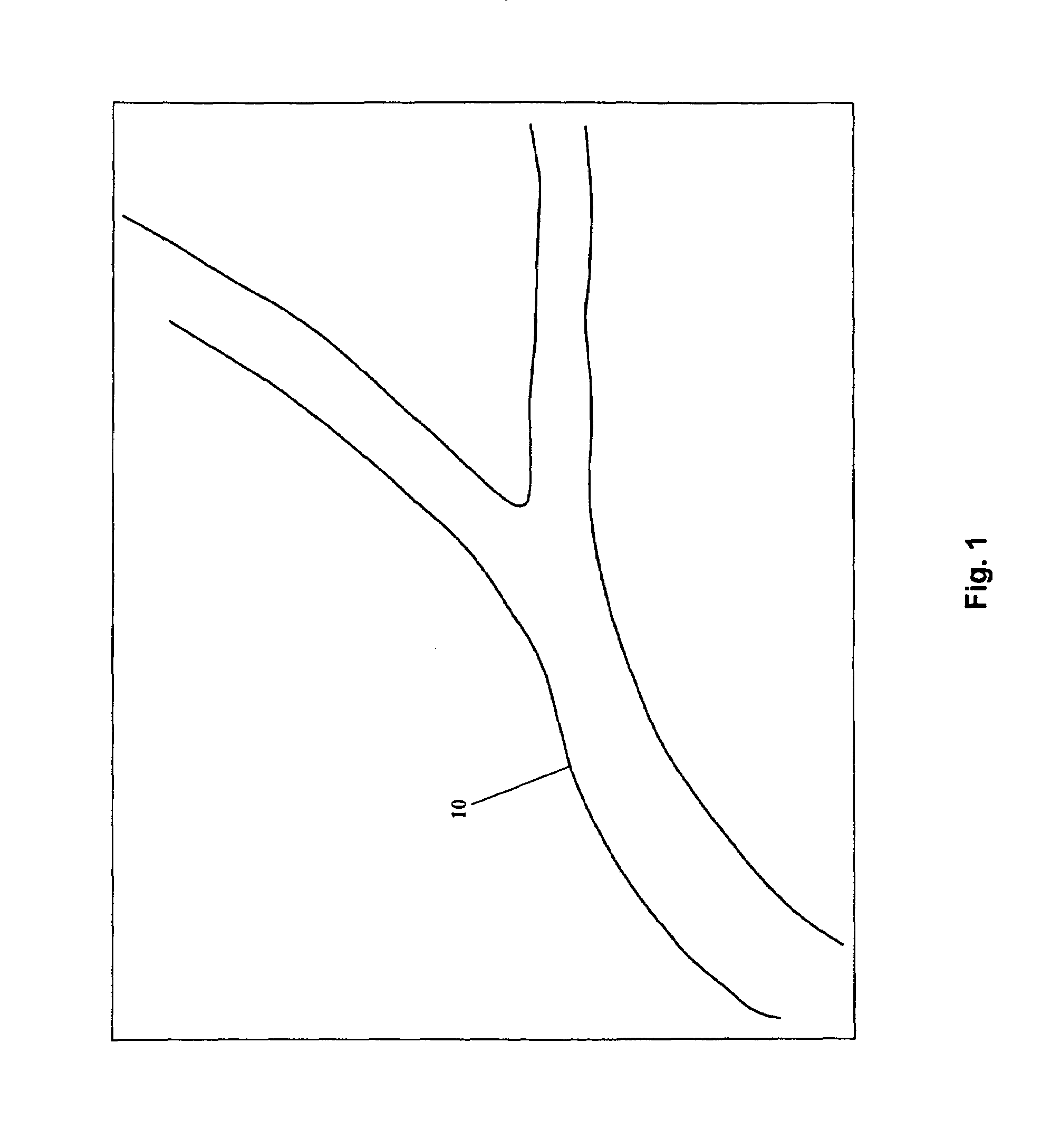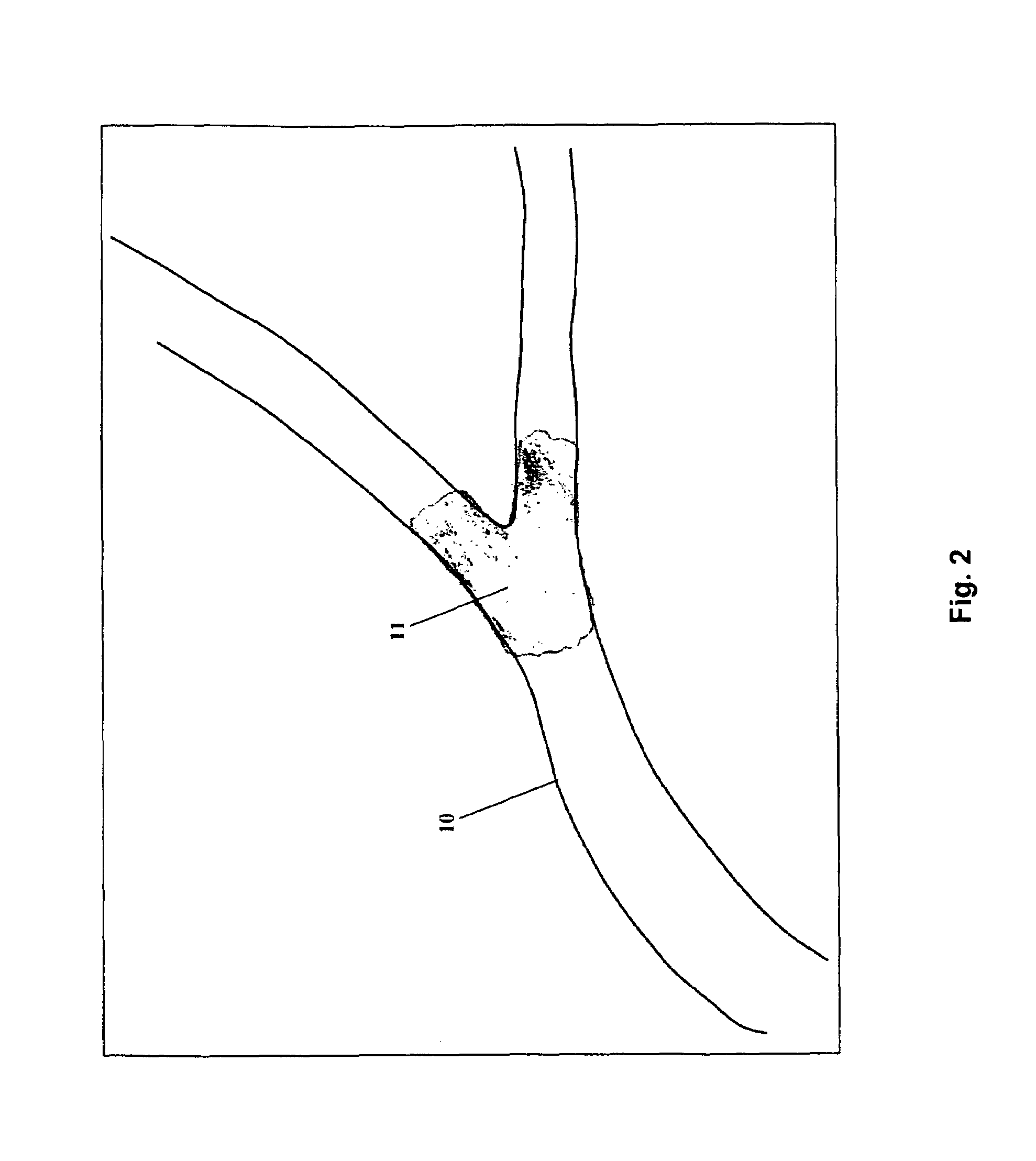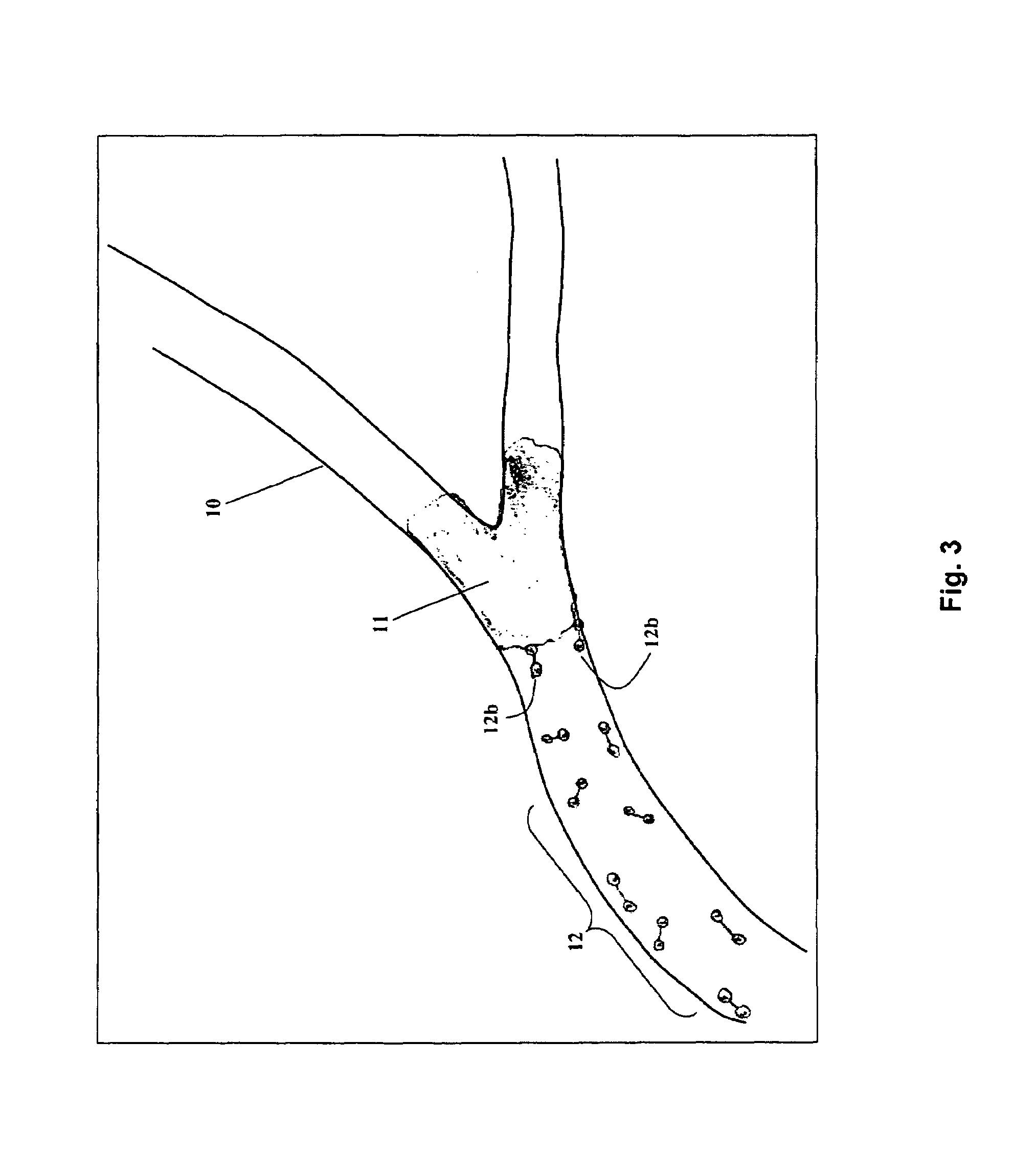Diagnosis of blood clots using fibrin-binding proteins bound with contrast agents
a technology of fibrin-binding proteins and contrast agents, which is applied in the direction of peptidases, peptide/protein ingredients, enzymology, etc., can solve the problems of not being sensitive enough for clinical practice, and also storing and disposing of radioactive materials, so as to limit side effects and facilitate interpretation. , the effect of limiting side effects
- Summary
- Abstract
- Description
- Claims
- Application Information
AI Technical Summary
Benefits of technology
Problems solved by technology
Method used
Image
Examples
example 1
Detection of Blocked Blood Vessel
[0056]A 45-year-old male presents with substernal chest pain. He has a complex medical history, and possible etiologies for his pain include an acute heart attack, a pulmonary embolus, or his chronic pulmonary disease. His initial ECG in non-diagnostic. In addition to standard treatment, the fibrin-binding protein-contrast agent 50 mg / kg is given as a bolus intravenous injection. After 10 minutes a CT of his chest is preformed which shows a “blush” of contrast in the area of the heart, consistent with a blocked coronary blood vessel. The patient is then quickly seen by the cardiologist and definitive treatment (e.g., tPA) is given without delay.
example 2
Detection of Pulmonary Embolus
[0057]A 75-year-old female presents with shortness of breath. The patient has a long history of smoking, and has a slight fever on presentation. She has just returned from vacation, which included a 6-hour trip. The fibrin-binding protein-contrast agent compound is given as a bolus intravenous injection. 10 minutes later, a chest x-ray is taken that is clear except for a slight blush in the right middle lobe. She is then taken to the CT scan, which shows a contrast “blush” in the right middle lobe, consistent with a blood clot, or pulmonary embolus. The patient is admitted for definitive treatment.
example 3
Detection of Blood Clot in Leg Vessel
[0058]A 28-year-old male presents with increasing swelling and pain of his left leg. The patient broke the same leg three weeks ago, and it is now in a cast. The patient was doing well, with minimal pain until four days ago. His exam is normal except for mildly swollen toes at the far end of his cast. The fibrin-binding protein-contrast agent compound is administered by intravenous bolus to his descending artery. The patient then has an x-ray of his upper and lower leg 10 minutes later, which shows a contrast “blush” just above the knee. Treatment (e.g., coumidin) is started for the blood clot, and a potential pulmonary embolus is avoided.
PUM
| Property | Measurement | Unit |
|---|---|---|
| computed tomography | aaaaa | aaaaa |
| nucleic acid sequence | aaaaa | aaaaa |
| time | aaaaa | aaaaa |
Abstract
Description
Claims
Application Information
 Login to View More
Login to View More - R&D
- Intellectual Property
- Life Sciences
- Materials
- Tech Scout
- Unparalleled Data Quality
- Higher Quality Content
- 60% Fewer Hallucinations
Browse by: Latest US Patents, China's latest patents, Technical Efficacy Thesaurus, Application Domain, Technology Topic, Popular Technical Reports.
© 2025 PatSnap. All rights reserved.Legal|Privacy policy|Modern Slavery Act Transparency Statement|Sitemap|About US| Contact US: help@patsnap.com



